The priority relay is a small electrical device, the main task of which is to control the switching on of electrical appliances. It is briefly called RPN. Able to respond to an increase or decrease in the load by disconnecting, and also monitors the total current of the supply network. The use of such a design allows you to get rid of the problem of excess wiring loads.
Relay types
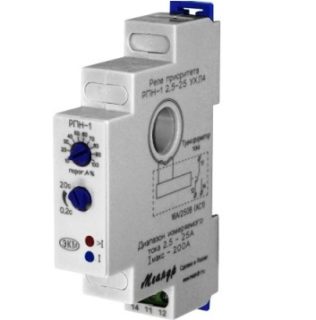
The priority relay is very popular in country and private houses, as well as apartment buildings, industrial enterprises. The essence of the work is to divide the electrical network into priority highways and less important ones.
There are several types of load priority relays:
- single and three-phase;
- single and multichannel.
Three-phase structures are also capable of performing the functions of phase priority, distributing the load evenly over single-phase channels. This approach allows you to prevent the complete blackout of the entire facility.
Multichannel load relays are used together with different types of lines.
By functionality, the equipment is divided into the following types:
- lower threshold;
- upper threshold.
The latter are triggered when the current increases, they are connected according to the serial connection scheme. The device, which is triggered by the minimum voltage threshold, is connected in parallel.
Modifications are available that are designed for different levels of inclusion. It is possible to adjust the device for different loads. In networks with heavy loads, it is recommended to use them in tandem with a current transformer.
Specifications and design features
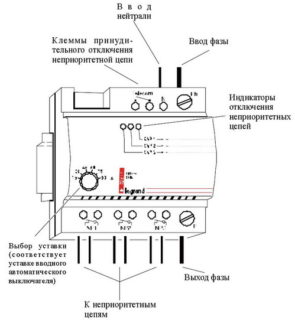
The relay for disconnecting non-priority loads is equipped with a built-in current meter, as well as an actuator that switches the contacts when the preset parameters are reached with a preset time delay. The measuring element is able to track the current strength in a certain interval.
The maximum current switched by the built-in contacts, as a rule, is characterized by a standard value of 16 A. For switching high currents, contactors are used - magnetic starters. In such cases, the priority relay only gives a control impulse to it.
To control large currents, there are separate types of devices that allow you to connect external current transformers.
Application area
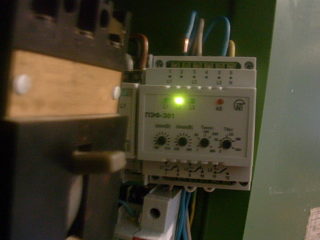
An inductive load relay is used when it becomes necessary to set up an electrical network with limits on the amount of energy consumed. Similar situations occur when there are more users than a given network can provide, and it is not possible to change its technical and design characteristics.
This miniature electrical device ensures uninterrupted operation and safe operation of a large number of electrical devices, while maintaining the integrity of the network structure. If it is required to use, for example, a powerful device, non-priority ones need to be manually turned off or to change the characteristics of the operated electrical circuit.
This approach is actively used in everyday life and in all industries.
The principle of operation and installation of on-load tap-changers
First of all, the current transformer is connected to the common line, and after that the consumers. In the first stage, loads are placed in the circuit, which have a priority value and should not be disconnected.
Further, a consumer relay is added to the circuit, with the help of which non-priority load groups are switched. When the load in the power grid is exceeded, they will begin to gradually turn off in a sequence established by a person in order of importance.
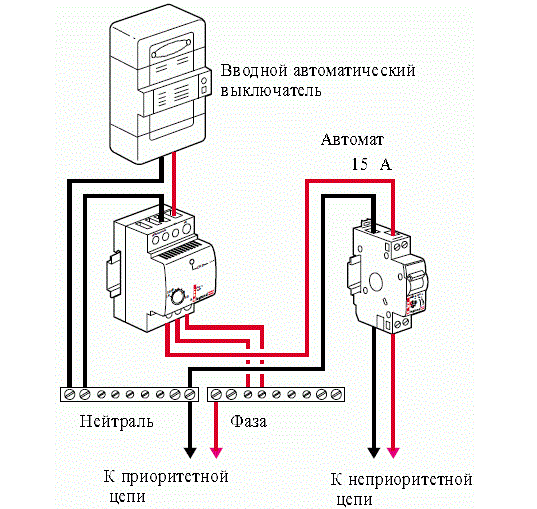
A signal is sent from the current meter to the comparator built into the module. Its main task is to correlate the received signal with the settings set by the person. The relay determines the moment of the comparator operation, as well as the shutdown time of electrical devices with low priority. This principle of operation helps to reduce the current in the network.
Model overview
The high popularity of this type of equipment has led to the fact that more and more manufacturers are beginning to produce it. It is rather difficult to choose a device that combines affordable cost and good quality.
The table shows well-proven models.
| Manufacturer | Specifications | Approximate cost in rubles |
| F&F (Poland) | Settable current range from 5 to 90 A. The adjustment interval for the tripping current of the low-priority circuit ranges from 2-15 A. | 2000 |
| Legrand 0 038 11 | The device is equipped with 5 modules. The total current strength of the connected consumers is 90 A. The shutdown threshold is 15, 20, 25, 30, 40, 50, 60 (A). | 1800 |
| Z – LAR / 8 | Switching frequency no more than 3 600/60 minutes. Rated voltage 250V. Inrush current more than 3 A. Breaking current less than 1.8 A. | 1750 |
It is also recommended to pay attention to the products of ABB LSS, CDS Schneider Electric.
Disadvantages of using an on-load tap-changer
Despite the rather extensive list of advantageous features, the RPN also has disadvantages:
- It is not possible to install a priority relay on ordinary wiring, the circuit of which is not equipped with separate lines to the sockets.
- To install the device in an existing network, it is necessary to perform a lot of work that is associated with the modernization of the wiring.
To conduct isolated wiring lines from the switchboard, you will need to groove the walls, so repairs throughout the room cannot be avoided. This approach requires considerable financial costs, time and effort.
Typical connection errors
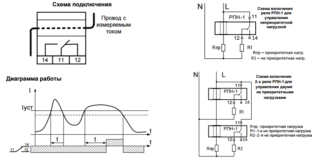
There is a lot of accompanying documentation, where detailed diagrams for connecting the tap changer are given, but people still make common mistakes. To warn them, you need to read the following information:
- Inexperienced specialists or people with no experience apply a phase to the contacts of the priority relay. In fact, they are designed to switch indicator lamps.
- Direct connection of loads to on-load tap-changers, not through contactors. The maximum load of the device is not more than 16 A. The reason may be inattention or insufficient knowledge, disregard of the equipment manufacturer's recommendations.
Another common mistake is incorrect grouping of consumer loads according to their importance. If the solution to this issue is difficult, it is better to seek the advice of professionals who will help you find priority equipment at home or at work.
Priority relay analogs
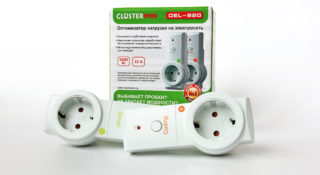
To install a priority relay in an existing electrical network, you will need to do a lot of smart work, for example, modernize the switchboard and the wiring itself. It is not always possible to do this yourself, since you will need to accurately calculate the entire load diagram.
The solution to the problem became much easier after the development of a new, more advanced device, which was called the network load optimizer.The principle of operation of the analogue is to redistribute the power of electrical devices according to their priority. The design features are simple, the device is designed for simple operation. It is not installed in a switchboard, it consists of two adapters for a socket outlet and a plug.








